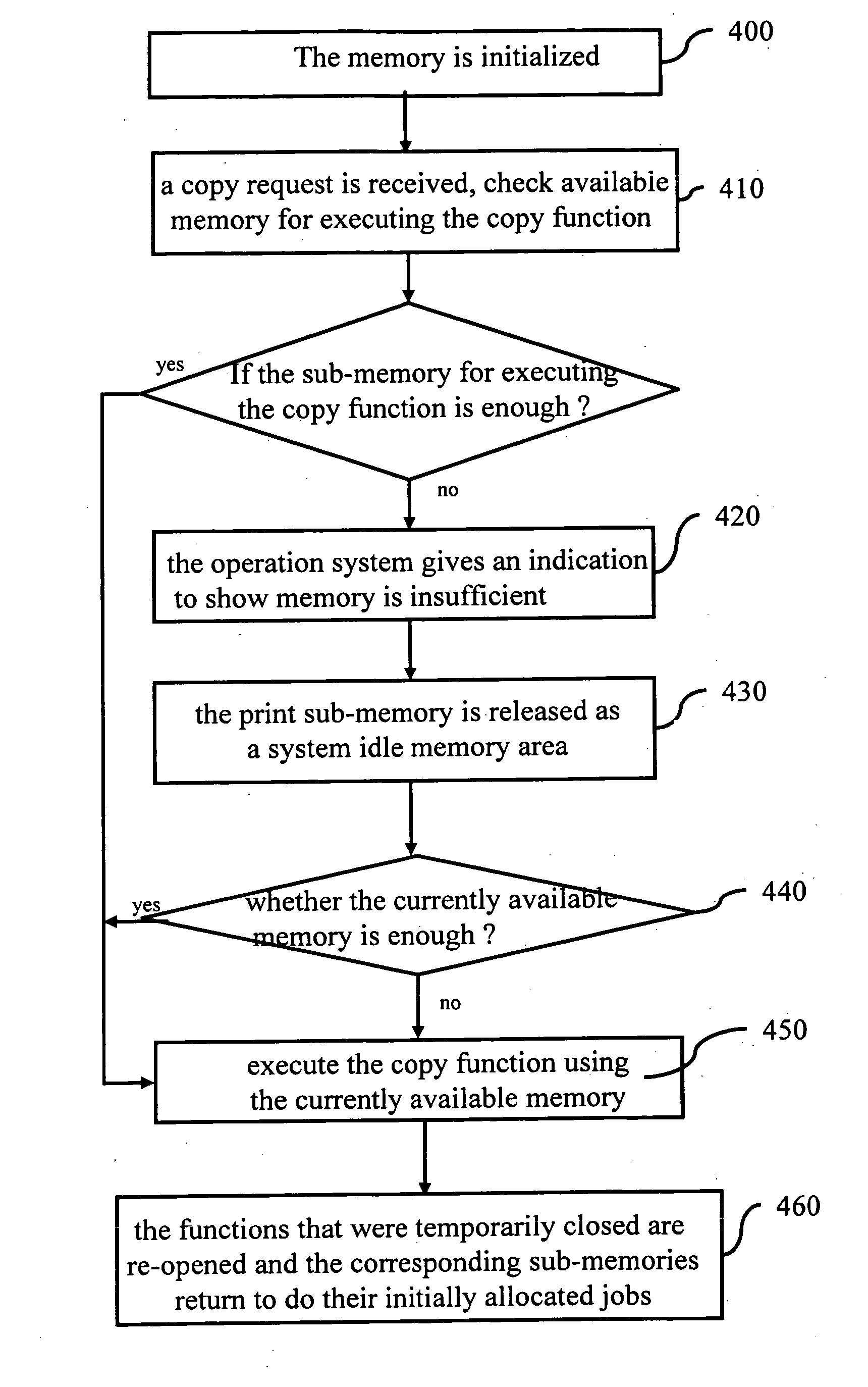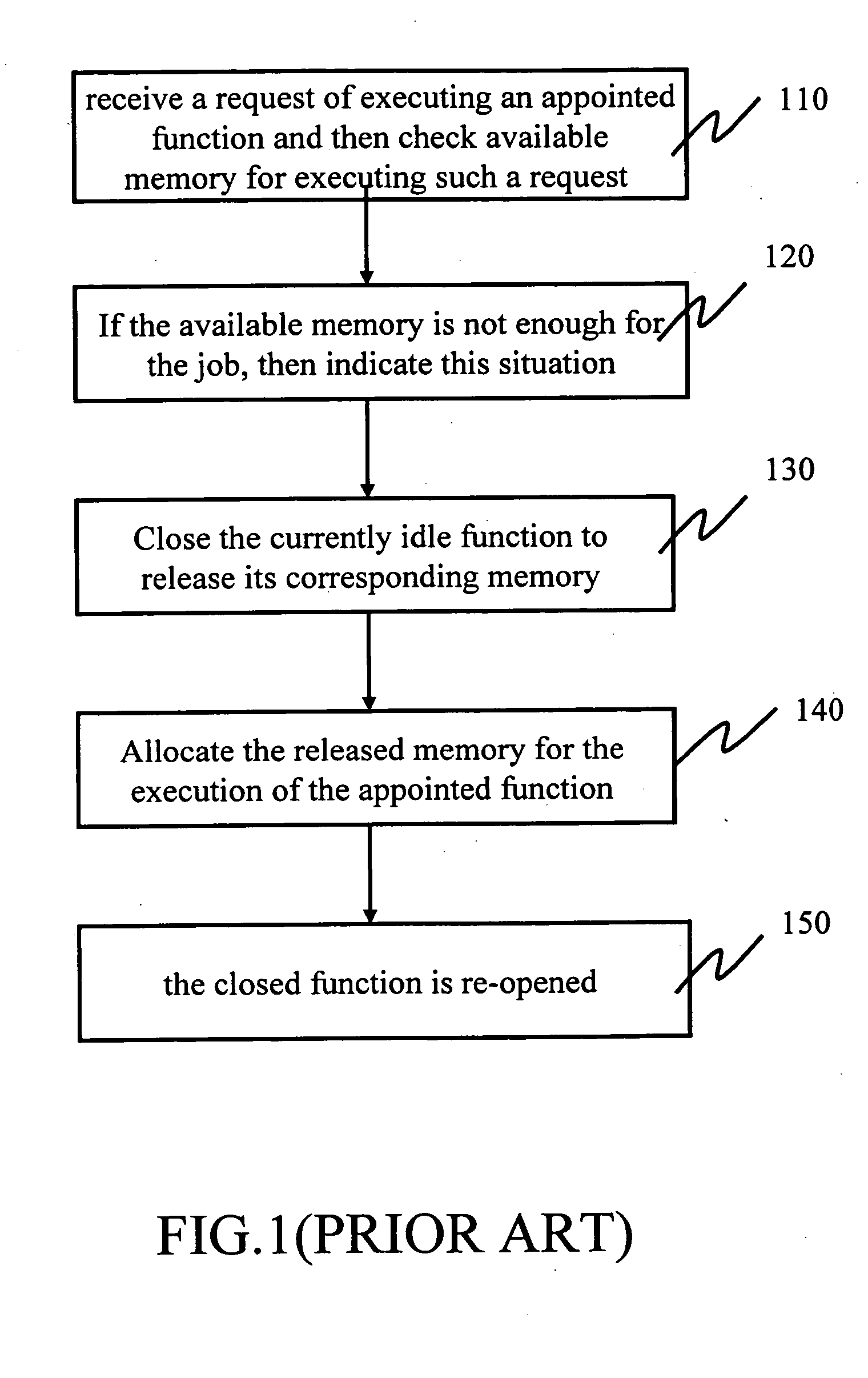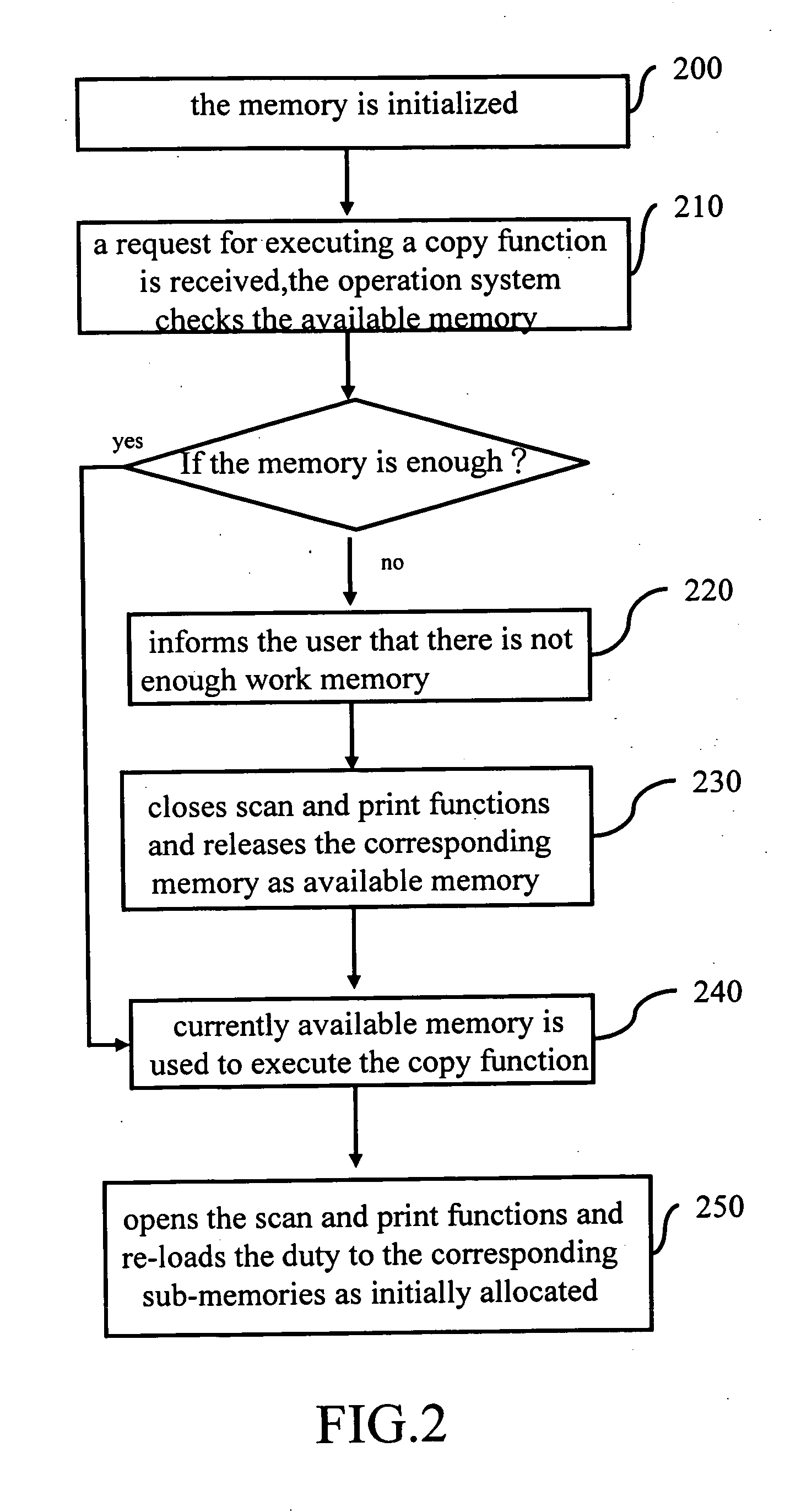Memory management method for multifunction peripheral
- Summary
- Abstract
- Description
- Claims
- Application Information
AI Technical Summary
Benefits of technology
Problems solved by technology
Method used
Image
Examples
first embodiment
[0014] The invention is described by showing a 4-in-one business machine as an example, which can copy, print, scan and do facsimile jobs. FIG. 2 is a flowchart of the memory management of a MFP according to the invention. The MFP is provided with 32 Mbytes. Firstly the memory is initialized (step 200). An operation of the MFP initializes memory respectively workable for executing copy, print, scan and facsimile functions. If there is no request for executing an appointed function, then the memory is divided into several sub-memories for executing corresponding functions (as shown in FIG. 3a). As soon as a request for executing a copy function is received, the operation system immediately checks the available memory (step 210). The maximum capacity of memory, used for the copy-function execution, is the sum of the system idle memory (10 Mbytes) and the copy-job memory (6 Mbytes), totaling 16 Mbytes. If copying a page needs 400 K bytes, then 16 Mbytes can afford 40-page copies. If mo...
second embodiment
[0015]FIG. 4 is a flowchart of a process of memory management according to the invention. The memory is initialized to allocate the execution of copy-, scan-, print- and facsimile functions in sub-memories (step 400). When a copy request is received, check available memory for executing the copy function (step 410). If the sub-memory for executing the copy function is not enough, then the operation system gives an indication to show such a situation (step 420). The operation system automatically closes at least one currently idle function such as a print function. The function-closed sub-memory (in this case, the print sub-memory) is released as a system idle memory area (step 430). At this moment, the total capacity of available memory for executing a copy function is the sum of the system idle memory and the copy sub-memory. Then, determine whether the currently available memory is enough for executing the copy function (step 440). If NOT, then close the scan function and allocate...
PUM
 Login to View More
Login to View More Abstract
Description
Claims
Application Information
 Login to View More
Login to View More - R&D
- Intellectual Property
- Life Sciences
- Materials
- Tech Scout
- Unparalleled Data Quality
- Higher Quality Content
- 60% Fewer Hallucinations
Browse by: Latest US Patents, China's latest patents, Technical Efficacy Thesaurus, Application Domain, Technology Topic, Popular Technical Reports.
© 2025 PatSnap. All rights reserved.Legal|Privacy policy|Modern Slavery Act Transparency Statement|Sitemap|About US| Contact US: help@patsnap.com



